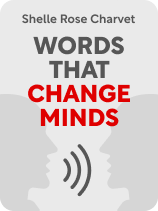

This article is an excerpt from the Shortform book guide to "Words That Change Minds" by Shelle Rose Charvet. Shortform has the world's best summaries and analyses of books you should be reading.
Like this article? Sign up for a free trial here.
Are you active or passive in your approach to action? What about the people around you?
When you understand how people operate, it’s easier to communicate with them effectively and work with them toward a goal. Communication and influencing language expert Shelle Rose Charvet discusses active vs. passive personality and shares tips on how to speak each language.
Keep reading for her practical advice as well as a broader discussion about active and passive behavior.
Active vs. Passive Personality
Different people have different degrees of readiness to spur themselves into action: Are they active or passive? (Charvet uses the term “Level” to refer to active vs. passive personality.) Active people progress toward their goals as quickly as possible, while passive people tend to wait and analyze the situation until the perfect opportunity arises or someone else pushes them into action.
You can tell someone is active if they speak in short, direct sentences that emphasize simple cause-and-effect sequences, asserts Charvet. To communicate effectively with an active person, mirror this effect. For example, you could say, “We’re downsizing to keep this branch profitable.”
In contrast, passive people speak in long, often meandering sentences that highlight the subtle complexities of a situation. To break downsizing news to a passive person, you might say, “Although there’s great work being done in every department, it’s likely that we’ll start running a deficit unless we downsize to reduce our current expenses.”
| Does the Workplace Need More Passive Introverts? This split between active or passive behavior mirrors the introvert-extrovert split Susan Cain describes in Quiet. According to Cain, extroverts tend to be more active and confident, while introverts are more passive and reflective. Like Charvet, Cain acknowledges that although we typically think of personality traits as fixed, no one is completely extroverted or introverted in all contexts. Rather, some situations will bring out more of your extroverted or introverted tendencies. Cain argues that modern society views extroverted traits as “ideal” and underappreciates the unique, more subtle strengths of introverts—to everyone’s detriment. For instance, in the workplace, group brainstorming meetings are popular, yet studies show they often end up producing worse ideas than people who think alone. Why is this? In these meetings, anyone can voice their opinion to the group, so the most active, extroverted people end up speaking more than anyone else. Because (as Charvet notes) active people tend to speak in shorter, more straightforward terms, teams give simpler ideas more credit than they deserve. People who tend to highlight useful complexities and nuance are generally more passive, so these ideas are less likely to be recognized by the group. |

———End of Preview———
Like what you just read? Read the rest of the world's best book summary and analysis of Shelle Rose Charvet's "Words That Change Minds" at Shortform.
Here's what you'll find in our full Words That Change Minds summary:
- Why it's sometimes hard to understand what others are trying to say
- The 14 kinds of mental habits that explain how people think
- How to understand others better and build positive relationships






